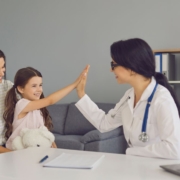The Impact of COVID-19 on Addiction Treatment Availability in New Jersey
Introduction
Before the world shuttered under the weight of a global pandemic, addiction treatment in New Jersey was already battling formidable adversaries—stigma, limited resources, and fragmented care pathways. COVID-19 arrived not just as a viral contagion but as a stressor that would unravel the delicate threads holding together the state’s addiction recovery framework. What ensued was not only a public health crisis but a profound upheaval in how care was delivered, accessed, and sustained for those grappling with substance use disorders.
Pre-Pandemic Addiction Treatment Landscape in New Jersey
New Jersey’s addiction treatment ecosystem had grown steadily over the past decade, supported by a network of detox centers, outpatient clinics, inpatient facilities, and community-based recovery programs. While progress was visible, the landscape remained uneven—rural areas faced accessibility issues, and underserved populations struggled with insurance barriers and systemic inequities.
Prior to 2020, opioid-related deaths in the state were already a cause for alarm. Fentanyl-laced street drugs and under-regulated prescription practices had driven overdose statistics to unsettling levels. Resources were stretched thin. Treatment waitlists were common. Even when care was available, continuity remained elusive due to frequent relapses and fragmented follow-up services.
Navigating Detox Realities
Eliminating substances from the body is a process that hinges on time, hydration, and metabolic health. When considering how to get cocaine out of urine, it’s important to understand that no method guarantees instant results. Cocaine typically remains detectable in urine for up to 3 days, though heavy or chronic use can extend this window. Increasing fluid intake, engaging in physical activity, and maintaining a nutritious diet may support natural detoxification.
However, these strategies cannot override the body’s intrinsic metabolic timeline. Relying on detox kits or unverified remedies can be risky and often lacks scientific support. Patience and medical guidance are crucial.
Pandemic Disruptions to Treatment Services
When COVID-19 took root, addiction treatment facilities were not spared. Many were forced to shutter temporarily due to health mandates or staff exposure. The intimate, communal nature of group therapy—an essential pillar of recovery—clashed with the necessity for social distancing. Quarantine regulations disrupted in-person counseling, 12-step meetings, and residential treatment admissions.
Staff shortages exacerbated the crisis. Therapists, counselors, and administrative personnel either fell ill or left due to burnout and fear. Programs that depended on daily interactions scrambled to redesign their care models. For those in recovery, the sudden vanishing of support networks was more than inconvenient—it was life-threatening.
Transition to Telehealth: A Double-Edged Sword
Necessity became the mother of reinvention. Treatment providers rapidly pivoted to telehealth platforms to maintain continuity of care. For some, this digital migration was a lifeline, offering newfound flexibility and anonymity. Tele-counseling, virtual group sessions, and online medication management appointments proliferated.
However, telehealth also illuminated the digital divide. Patients in lower-income brackets or rural zones often lacked access to reliable internet or the privacy needed for therapy. Elderly clients or those with cognitive impairments struggled with unfamiliar technology. The nuance of body language, crucial in therapy, was lost on screens. For many, virtual care felt like a simulacrum—better than nothing, but far from sufficient.
Mental Health Crisis and Rising Substance Use
The psychological fallout of the pandemic was immense. Isolation, job loss, housing instability, and grief combined into a potent cocktail of despair. Anxiety and depression rates soared. For individuals in recovery, these stressors increased vulnerability to relapse. For others, substance use began anew, fueled by boredom, fear, or the need to self-medicate.
In New Jersey, opioid overdoses spiked significantly during the height of the pandemic. Emergency responders reported an uptick in fentanyl-related fatalities and multiple-overdose scenarios. With access to naloxone (Narcan) sometimes delayed, the chances of survival diminished. The pandemic not only exposed existing fractures in the behavioral health system—it deepened them.
Policy Responses and Emergency Adaptations
Despite the chaos, New Jersey implemented several emergency measures aimed at stabilizing the treatment system. State and federal agencies relaxed previously rigid guidelines, allowing for expanded use of Medication-Assisted Treatment (MAT) such as methadone and buprenorphine via telemedicine.
Regulations surrounding take-home doses of medications were eased, reducing the need for daily clinic visits. The New Jersey Department of Human Services launched initiatives to support providers financially and logistically. Mobile recovery units and hotlines were amplified to bridge the access gap.
These stopgap solutions were pragmatic, even revolutionary in some respects. They revealed that many of the pre-pandemic restrictions were bureaucratic encumbrances, not clinical necessities.
Flushing the System: Myths and Realities
In recent years, numerous products claiming to cleanse the body have gained popularity, especially among individuals seeking rapid detoxification. Among these are cocaine detox drinks, marketed as quick solutions for flushing drug residues from the body. These beverages often contain a mix of diuretics, herbal extracts, and vitamins, promising to accelerate the elimination of toxins.
While they may increase hydration and urination, there’s limited scientific evidence to support their effectiveness in truly purging cocaine metabolites from the system. Ultimately, time, hydration, and liver function remain the most reliable methods for detoxification rather than over-the-counter concoctions.
Long-Term Implications and the Path Forward
As the pandemic wanes, its influence on addiction treatment in New Jersey will not be ephemeral. The accelerated adoption of telehealth is likely to persist, but it must be refined to accommodate those it inadvertently excludes. Blended care models—combining digital tools with in-person engagement—offer a promising path forward.
Moreover, the crisis highlighted the urgency of addressing social determinants of health—housing, employment, transportation—that affect recovery outcomes. It also rekindled debates around decriminalization, harm reduction, and the role of community-based interventions.
There is an emerging consensus that addiction treatment must be more agile, inclusive, and patient-centered. Reform is no longer optional—it is imperative.
Conclusion
The COVID-19 pandemic stress-tested New Jersey’s addiction treatment infrastructure with unrelenting force. It exposed frailties, demanded innovation, and forced a reevaluation of what constitutes accessible and effective care. While scars remain, so too do the lessons—lessons that, if heeded, could usher in a more resilient, compassionate, and adaptive system. The path forward is complex, but it begins with an unflinching commitment to prioritizing recovery as a fundamental pillar of public health.








